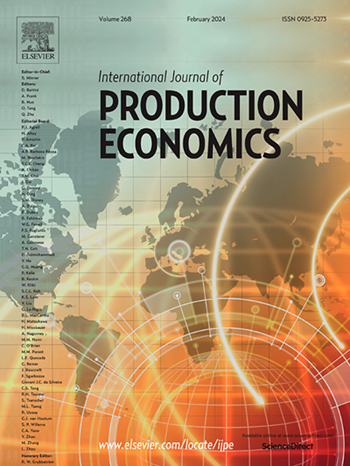Prepositioning of emergency supplies and channel coordination: Considering a loss-averse supplier and government penalty
IF 9.8
1区 工程技术
Q1 ENGINEERING, INDUSTRIAL
引用次数: 0
Abstract
In humanitarian contexts, less attention has been paid to the bounded rationality of suppliers, which may lead to understocking of emergency supplies. Failing to recognize and correct understocking significantly impacts the reliability of humanitarian supply chains (HSCs). To bridge the gap, we redesign a humanitarian system composed of a local authority and a loss-averse supplier with a non-zero reference profit. Introducing an option contract and penalty mechanism into the public-private cooperation (PPC) in stocking emergency supplies. The conditions under which the supplier adopts either a stocking-to-order or understocking strategy are identified. The results show that the supplier's optimal reserve quantity of emergency supplies decreases with increasing loss aversion and optimism levels, with a greater sensitivity to changes in optimism than in loss aversion. Increasing the penalty coefficient slows the rate of decline in the supplier's reserve quantity if the loss aversion (optimism) level is low but has the opposite effect if the supplier's loss aversion (optimism) level is high. Humanitarian channel coordination is achieved under four conditions, two of which require that the supplier's loss aversion level must not exceed the loss aversion threshold and that the penalty coefficient must fall within a specific range. Additionally, a Nash bargaining model is developed to determine an optimal option price acceptable to the authority and the supplier, which enhances the willingness of the HSC members to jointly preposition emergency supplies. Finally, the case study shows that the PPC model leads to utility improvements for authorities and suppliers and provides direct validation of the PPC model's effectiveness. Our paper explains the motivations behind supplier understocking from a behavioral perspective and provides a penalty mechanism for regulating suppliers in line with government orders, which is of great significance for guaranteeing the reliable supply of emergency supplies.
应急物资的预先部署和渠道协调:考虑避免损失的供应商和政府惩罚
在人道主义方面,很少注意到供应商的有限理性,这可能导致应急用品库存不足。未能识别和纠正库存不足严重影响人道主义供应链(hsc)的可靠性。为了弥补差距,我们重新设计了一个人道主义系统,由一个地方当局和一个具有非零参考利润的规避损失的供应商组成。在公私合作(PPC)应急物资储备中引入期权合同和处罚机制。确定了供应商采用按订单备货或库存不足策略的条件。结果表明,供应商的最优应急物资储备量随损失厌恶程度和乐观程度的增加而降低,且对乐观程度变化的敏感性大于对损失厌恶程度变化的敏感性。当损失厌恶(乐观)水平较低时,惩罚系数的增加会减缓供应商储备数量下降的速度,而当供应商损失厌恶(乐观)水平较高时,惩罚系数的增加会产生相反的效果。人道主义渠道协调在四种条件下实现,其中两种条件要求供应商的损失厌恶程度不得超过损失厌恶阈值,惩罚系数必须在特定范围内。建立了纳什议价模型,确定了管理者和供应商均可接受的最优期权价格,增强了HSC成员共同配置应急物资的意愿。最后,案例研究表明,PPC模式为当局和供应商带来了效用改进,并直接验证了PPC模式的有效性。本文从行为角度解释了供应商库存不足的动因,并提出了一种按照政府命令规范供应商的惩罚机制,对保障应急物资的可靠供应具有重要意义。
本文章由计算机程序翻译,如有差异,请以英文原文为准。
求助全文
约1分钟内获得全文
求助全文
来源期刊
CiteScore
21.40
自引率
7.50%
发文量
266
审稿时长
52 days
期刊介绍:
The International Journal of Production Economics focuses on the interface between engineering and management. It covers all aspects of manufacturing and process industries, as well as production in general. The journal is interdisciplinary, considering activities throughout the product life cycle and material flow cycle. It aims to disseminate knowledge for improving industrial practice and strengthening the theoretical base for decision making. The journal serves as a forum for exchanging ideas and presenting new developments in theory and application, combining academic standards with practical value for industrial applications.

 求助内容:
求助内容: 应助结果提醒方式:
应助结果提醒方式:


